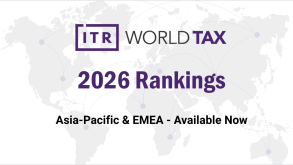Deloitte undertook an internal survey to better understand the ever-evolving transfer pricing (TP) controversy landscape. Participants were TP practitioners specialising in controversy matters. The survey covered participants from more than 55 countries.
This survey was an update to establish a current point of comparison from an earlier survey completed in early 2019. While the same queries were asked previously, the current effort also included new questions around TP specific penalties and use of country-by-country (CbC) reports in risk assessments and TP audits.
Tax authorities
One key and relatively simple indicator to measure the importance of a tax matter in any jurisdiction is to check the presence of specialised teams created by tax authorities to deal with such matter. The ‘OECD Tax Administration 2019: Comparative Information on OECD and Other Advanced and Emerging Economies’ publication covering 58 countries showed that tax authorities face a continued challenge of budgetary pressures and at the same time a transformation pressure on their workforce.
While the direction of travel was clear in the 2019 survey itself, wherein more than 80% countries had responded that tax authorities have specialised teams or departments for TP scrutiny in their jurisdictions.
In two years, there has been a significant increase coming in the Middle East and Africa (MEA) region. In the Middle East, structural reforms have been introduced in the region’s tax landscape in the last two to three years. The local governments are establishing robust regulatory frameworks aligned with international best practices, increasing TP staff, hiring TP specialists from advanced countries, and upskilling and increasing the capacity of tax departments.
The second query was on the level of technical sophistication of the tax authorities/economists. Like the previous survey results, the participants believe that there is an increase in technical sophistication of tax authorities; this increase has been observed across regions. This resonates with the news that tax authorities in many countries are increasingly using data analytics in identifying high-risk cases.
For example, in India, this is being done using an integrated data warehousing and business intelligence platform. Similarly, in China, audit case selection is aided by information and data collection schemes (‘global supply chain data’ and ‘1000 enterprises’ schemes). In addition, in China there is tax authority specialisation in areas such as sector experience (e.g. automotive, pharmaceuticals), intangibles and equity transfer valuation.
The final query was regarding the ability to engage with tax authorities up-front on TP matters (outside of APAs). Even though more than 50% of participants replied ‘yes’; there is a decline compared to the previous survey. Currently, the ability to engage with tax authorities up-front outside of APA is considered largely ‘limited’.
One can infer that the tax authorities want to engage upfront with taxpayers – however, they prefer it within the formal ambit of an advance pricing agreement (APA) programme.
Risk assessments and TP audits
Continuous regulatory changes with increase in technical/economic sophistication of tax authorities, heightened transparency along with the media glare also make TP controversy a ‘reputational’ concern for taxpayers. The next set of survey questions focussed on TP audit environment in each country.
Nearly, 90% of the participants replied that there is practical likelihood of an audit in their country and about 50% participants also replied that there is ‘frequent’ to ‘very frequent’ likelihood of litigation in their local jurisdiction.
In the Americas, the likelihood of litigation is even higher (about two-thirds of the countries). The 2019 MAP statistics published by the OECD, clearly show that more MAP cases are being added in the inventory. Based on the number of cases and countries involved, one can reasonably infer that there are more audits and adjustments being made globally.
Further, to better understand the case selection, it was asked whether countries have any industry or inbound/outbound specific audit initiatives or case selection? Compared to the 2019 survey, there was a significant increase in ‘yes’ replies.
For the Americas and the APAC regions, the responses were even higher, nearly two-third countries having some specific initiatives for audit selection. For example, in 2019, the Australian Taxation Office (ATO) had released a Practical Compliance Guideline, which sets out the ‘profit markers’ that the ATO will use under its compliance approach to assess the TP risk of inbound distribution arrangements.
In the current survey, additional questions were asked to understand the use of CbC reports for risk assessment purposes and in relation to TP audits.
As we are aware, CbC reports have been designed keeping the tax authorities in mind. The information contained in CbC reports provides key insights to the tax authorities on the multinational enterprise groups in their jurisdiction.
The ‘OECD Country-by-Country Reporting: Handbook on Effective Tax Risk Assessment’ (OECD, 2017) prepared by the OECD Forum on Tax Administration, under the sponsorship of Canada, clearly states that under BEPS Action 13 minimum standard, CbC reports may be used by tax authorities for the purposes of high level TP risk assessment, the assessment of other BEPS-related risks, and economic and statistical analysis, where appropriate. It should not be used by tax administrations to propose TP adjustments. The requirement that CbC report information is used appropriately is a condition that must be met for a tax authority to obtain and use CbC reports.
In the survey responses, more than 20% replies said that there was ‘frequent’ use of CbC reports for risk assessment purposes and another 50% said CbC reports were used ‘sometimes’. This is in line with the expected use of CbC reports and it may likely increase in the coming years.
Interestingly, some participants also replied that CbC reports have also been used in TP audits in addition to risk assessment. As long as the use of CbC information is as per OECD guidance, taxpayers would remain assured of it being used appropriately.
The survey also enquired about the common areas covered in audits; loss-making entities, Service arrangements, and intangible transactions are the most common issues. These are closely followed by business restructurings, financial transactions, and the challenge of comparables. However, the level of data interrogation used by the tax authorities seems to have substantially increased.
More than 75% of participants (more than 90% in APAC region) responded that during audits, tax authorities may undertake systems audit on data/numbers, interview staff, and make extensive request for data on other entities in taxpayers’ group. Compared to the 2019 survey, the extent of data interrogation has increased substantially across regions.
In addition, more than 40% of countries apply secondary adjustments as well, this further strains the cash flow positions of taxpayers. Moreover, more than 50% countries apply domestic deductibility/benefit provisions on what are essentially TP matters (including to deny access to MAP). This is even higher for MEA countries.
This shows that taxpayers need to be prepared to deal with multiple issues, navigate local rules along with highly data-intensive TP audits.
Penalties
The other point closely linked to TP audits is the application of penalties. The taxpayer may not get relief from penalty proceedings unless the double taxation avoidance agreement (tax treaty) or the MAP specifically waives the penalty. This has a direct financial impact on the taxpayer and on the overall effective tax rate as well.
As per the survey results, about 70% of the countries have ‘automatic’ or ‘common’ penalties. This is close to 90% in the Americas and the MEA region. Further, nearly 70% of the countries have specific TP-related penalties; it is nearly 90% in the Americas region and more than 80% in the APAC region. This shows that the taxpayers need to maintain proper compliance documentation and be prepared for an in-depth audit.
Any failure or lapse on part of taxpayers can result in penalties without much relief. The only plausible relief available is for taxpayers to use local voluntary disclosure programmes allowing taxpayers to present a TP adjustment and avoid penalties – such programmes are available in more than 50% of the countries; nearly two-thirds of the countries in the Americas region. However, this may not resolve the double taxation issues for taxpayers but only help where high penalties are involved.
Dispute prevention through APAs
APAs continue to remain the most important approach to prevent TP disputes by determining in advance the criteria for applying the arm’s-length principle to the controlled transactions. The next set of questions in the survey were related to the APA programmes in local jurisdictions.
More than two-thirds of the participants responded that taxpayers could enter into unilateral APAs (UAPA) with tax authorities. Compared to the previous survey, this number has grown with an increase in the MEA region and interestingly there is a decline in the Americas region. Considering the investments being made by tax authorities, UAPA activity in the MEA region is expected to increase in future.
On the other hand, the decline in Americas may be due to the fact that even though UAPAs can be entered, tax authorities want to encourage the taxpayers to apply for bilateral APAs (BAPA) instead of UAPAs, especially for taxpayer’s critical and material transactions. This may lead to UAPAs being limited to non-critical/non-material transactions.
However, a key consideration to the aid of UAPAs is that most countries do not restrict or limit a taxpayer’s ability to request for a mutual agreement procedure (MAP) if a TP adjustment is proposed by another tax authority. Compared to the earlier survey, more APAC countries have restrictions or limitations to access MAP where taxpayers have entered UAPAs with local tax authorities.
Whilst negotiating an APA with a taxpayer, the tax authorities undertake a very detailed exercise to determine the arm’s-length price for the controlled transaction. More than 50% of participants have responded that the average time taken to conclude an APA is more than two years. Compared to the 2019 survey, there is a clear increase in the time taken to conclude APAs across regions. This may be due to the restrictions imposed on account of the COVID pandemic leading to delays in holding physical meetings, negotiations, and overall conclusion of APA processes.
On the other hand, there is an increase in the number of countries where the taxpayers can include more than two prior years in the APA programme. Further, there is also an increase on the ability to roll back APAs in dispute scenarios.
Another interesting response has been on the query relating to the ability to request a BAPA after a TP examination has started and have the TP examination and APA proceed in a coordinated manner. Herein, most participants have said ‘no’ to this query; compared to the previous survey, the decline was more pronounced in the European region. Hence, it would be good for taxpayers to undertake audit risk assessment for their controlled transactions and apply for BAPAs at the outset.
Overall, both the taxpayers and tax authorities need to invest time in an APA process, which may take additional effort due to the global pandemic. However, the benefits clearly outweigh the initial investment not only for future years but also for resolving prior year disputes.
Other points
As we know that controlled transactions do not impact just the transfer prices but also have customs/VAT implications. Herein, nearly 30% of the countries have said that the results of TP examinations are also coordinated or shared with local customs/VAT authorities. This is higher at nearly 40% in the European region. Separately, the survey asked whether the tax authorities voluntarily share information with other tax authorities; herein, about 25% participants said that sharing of information is ‘common’ by their tax authorities and another 50% said it is shared ‘sometimes’.
This signifies that tax authorities are willing to share information even outside of automatic exchange of information route. This may lead to more coordinated audits by tax authorities in the coming future.
Clear direction forwards
Overall, from the survey results one can say that there is clear direction towards an increase in TP controversy.
Going forward, taxpayers need to be prepared for more analytics and risk-based case selection with frequent and in-depth audits. Further, coordinated audits along with enhanced penalties will only stretch the taxpayers’ resources who would need to manage disputes at multiple levels.
In this environment, APAs continue to remain the key tool available for dispute prevention benefitting both the taxpayers and the tax authorities.
Click here to read Deloitte's TP Controversy Guide 2021
Vrajesh Dutia |
|
|---|---|

|
Partner Deloitte India T: +91 80 6188 6729 Vrajesh Dutia is a partner of Deloitte India. He has more than 16 years’ experience in TP planning, audit defence, compliance and global documentation projects for MNEs. Vrajesh is part of Deloitte’s Global Transfer Pricing Centre (GTPC) based in India. He has been involved in setting up the GTPC, manages large and complex projects in the GTPC and coordinates with various Deloitte member firms in the EMEA region. He is also part of the Deloitte’s TP controversy network leadership team. He has an in-depth knowledge of global TP planning and compliance strategies for large and medium-sized MNEs. Vrajesh has worked on many large TP projects with the member firms for both planning and global documentation purposes covering inbound and outbound transactions. He has worked on clients across various industries, including information technology, engineering, and FMCG. He has been involved in TP advisory, planning, compliance, and audits for various MNE clients in India. He also has significant experience in handling global TP compliance for various MNEs. He is a member of the Institute of Chartered Accountants of India. |
Ananthanarayanan R |
|
|---|---|

|
Deputy manager Deloitte India T: +91 98 9401 6146 Ananthanarayanan is a deputy manager with Deloitte’s Global Transfer Pricing Centre in India. Ananthanarayanan specialises in global TP documentation and planning studies with in-depth knowledge on various databases. He has more than six years of experience in diverse projects ranging from TP compliance to advisory, planning and controversy projects. Ananthanarayanan’s key area of focus is assisting clients with TP compliance requirements, particularly delivering global documentation projects. |













